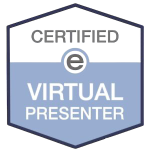Team Antoni Explains
Facilitating a workshop is an artform in itself. A good workshop becomes an opportunity for insights, consensus, and action plans.
The right Question + the right Instruction + the right Atmosphere = a Great Workshop
Here are 5 tips for you
1. Prepare
- Have a clear goal and purpose for the workshop that you can explain.
- Invite the right people. Include the goal and the purpose. This way, the participants’ subconscious minds can get to work.
- Create an agenda but fill it only to 80%, so you’ll have a margin if you need to adapt.
- Create clear instructions for each step. In a workshop, the goal is set but the result is created by the group. It is your task to support that process.
- Use larger rooms than normal meetings. Furnish it to support dialogue.
2. BE READY 5-10 MINUTES BEFORE YOU START
- Make sure that everything works (pens, post-its, projector, whiteboard, flipchart, etc.)
- Flip charts are great. Use them.
- Greet the participants. Put on some music.
- Group the participants with up to a maximum of 6 people around each table.
3. CREATE A POSITIVE ATMOSPHERE
- Start with an icebreaker. For example, you let the participants around each table share two truths and a lie about themselves. The others will guess which statement was a lie and which ones were true. Before a creative workshop, you can ask each group to come up with as many applications they can think of for an object like a book, toothpicks, a brick, etc.
- Get them to share something that got them happy the last week or so. It also creates a nice buzz.
4. RUN THE WORKSHOP
- Use the IPA method for idea generation (first Individual, then Pair, then All.) That way, you get the introvert’s views because they will otherwise be shadowed by the extroverts.
- Give attention to everyone. Encourage and praise the participants. Notice if someone is shying away or becoming disengaged.
- Vary your methods so that it doesn’t become monotonous and tedious.
- Signal control and comfort. That you are on top of things. They should not worry that the process does not lead somewhere.
- Let them present, reflect and discuss along the way. It can be done in several ways. The most common is that one group at a time presents their findings. Just keep an eye on the clock since time can go really fast here.
Read More:: What do rock stars and speakers have in common?
5. SUMMARIZE AND REFLECT
- At the end of the workshop, you or the participants summarize what results/ideas/agreements, etc. the group has achieved.
- If there are action points, highlight them a bit more. Who does what and when?
- Reflect on the process: What was good about the workshop? What could be better.
Thank them all for investing their time, mind, and heart into the workshop.



